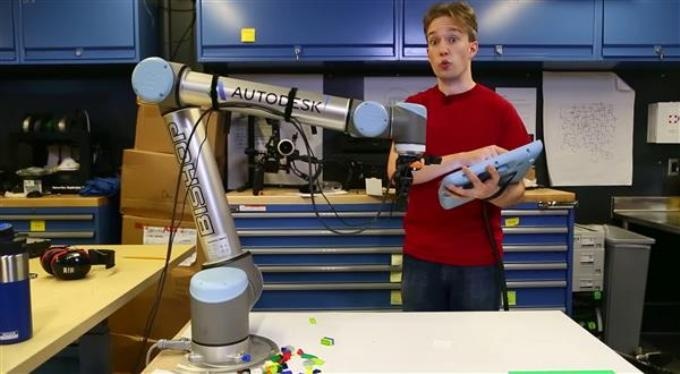Nov 25 2016
As a tech geek, there are many software, robotics, and 3D print related companies that would be a dream to work for. Over time, I’ve come to realize that these forward thinking companies usually have research departments that get to play with all the newest gadgets while innovating toward the technology of tomorrow.
 Credit: www.3ders.org
Credit: www.3ders.org
Of the companies that fall into this category, Autodesk is one that is doing all they can for 3D printing technology. I recently explored the Toronto based AutoDesk Research facility and was blown away by the sheer number of 3D printers they had on hand to play and develop new technologies with. But it's the Pier 9 Workshop, launched in 2013 and located in San Fransisco, that seems to be pushing things to the next level in thanks to their incredibly diverse and state-of-the art fabrication center.
A perfect case study of what Autodesk (and similar tech minded companies) get to work with in these facilities was demonstrated by YouTube tech vlogger Tom Scott during his recent visit to Pier 9, as seen in the video below.
3D Printing Stainless Steel with Giant Robot Arms
Specifically, Tom was able to get a sneak peak at the future of 3D printing stainless steel with the help of giant robot arms. And while this isn’t the first time we’ve seen these robots, typically seen in modern day automotive plants, what the Autodesk research team is hoping to achieve with them certainly is new.
As things stand, robotic arms aren’t necessarily the smartest of creatures. Maurice Conti, Director of Applied Research and Innovation at Autodesk notes that “two of the problems with programming robots the traditional way are that you need to tell it exactly what you want it to do. The other is that the robot assumes that nothing changes. You just manually drive the tip of the robot to where you need it to go and then hit ‘record,’ and then remember that point, then you drive it over to the other place and hit ‘record.” And so on and so forth.
So, when your eventual goal is to 3D print in stainless steel with these robots with relative ease and maximum safety, a lot of obstacles need to be overcome. As things stand, there are no failsafes in place that allow the robots to be conscious of external obstacles in their vicinity, such as human beings. In most cases this means if you accidentally find yourself in the path of a two tonne robotic arm, you will likely lose the fight.
Currently, it appears the robotics team is trying to develop a closed loop feedback system. This means that the robot could have more awareness of what it's doing from a general surroundings standpoint, but also from 3D printing perspective. If, for example, the material being used for the 3D printer jams, the robot will be aware thanks to its vision system and either pause the print or automatically correct based on the external data it collects.
But why experiment with giant robotic arms for 3D printing progress at all? Well, as Heather Kerrick, Senior Research Engineer suggests, “normal 3D printers do basically 2.5D. They go to an X and a Y, and then up and down. This robot can point in various directions. The robot needs to know not only where it is, but how it should point when it gets there. We give it a piece of geometry, and the software figures out the instructions set for the robot that will result in a print, that is what we want.”
In the end, just as has been the case by other corporate research centres (like Disney and their clever 3D model balancing algorithms for example), Autodesk is putting their money where their mouth is and pushing 3D print technology to the next level.